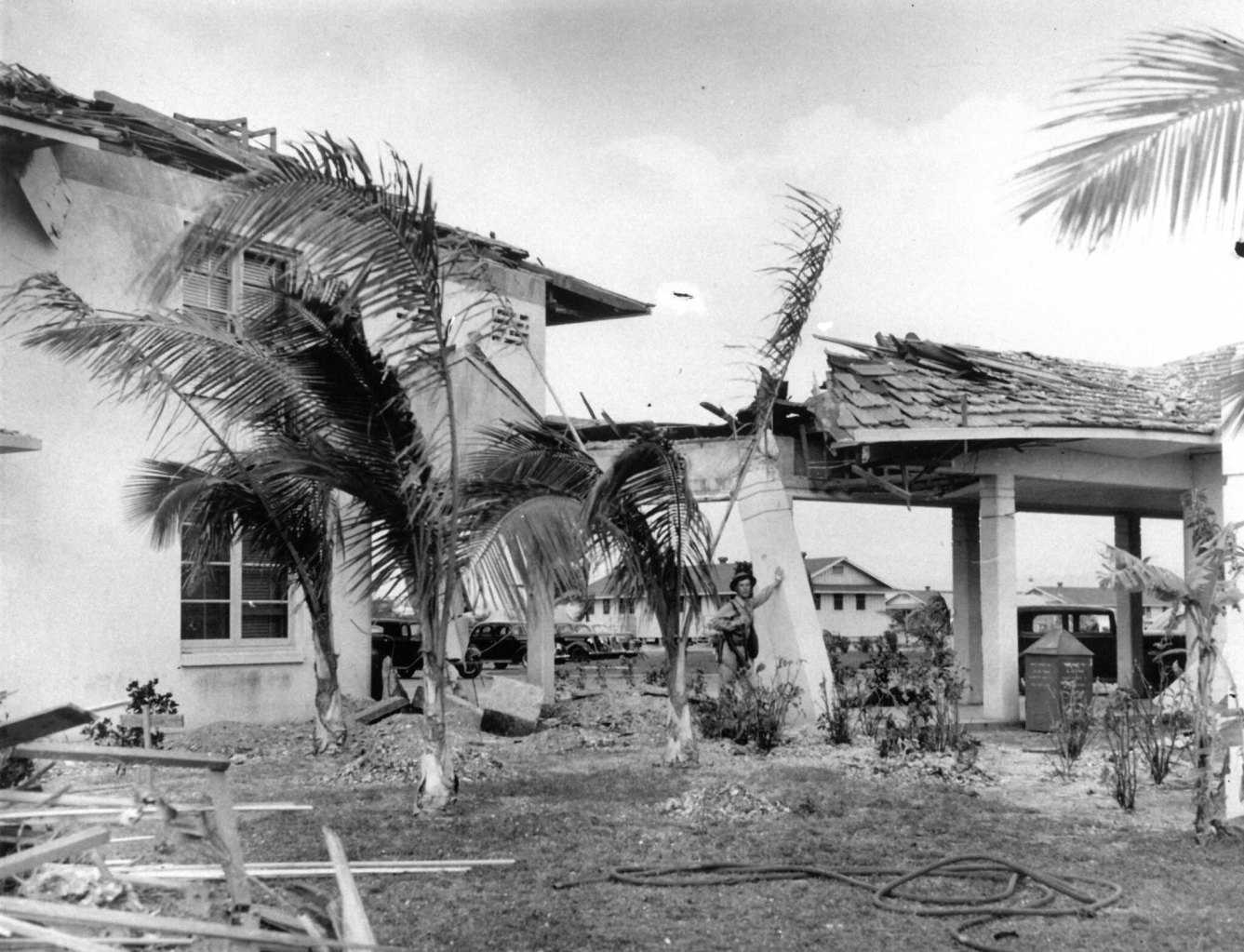#FlashbackFriday: The Pearl Harbor Attack and the Exchange

This Saturday, Dec. 7, is the 83rd anniversary of the Japanese attack on Pearl Harbor. Flashback Friday took a look in Exchange Post archives for connections to the Exchange—and found stories about a few survivors among past Exchange associates.
Pictured above is damage inflicted on Hickam Field by Japanese bombers. The post exchange at Hickam Field was reportedly among the buildings damaged. According to eyewitness accounts at Hawaii Aviation, bombs blew out all the windows at the Exchange, and an Exchange restaurant was hit, sending concrete and other fragments flying. The nearby post theater “went up in a cloud of splinters and flames,” according to one account.
In the December 1962 Exchange Post, Eunice Davis, a clerk at the Exchange guest house at Lackland Air Force Base who was living in Pearl Harbor when the attack occurred, recalled: “The PX was closed on Sunday and my husband and I were home. He was assigned to the 31st Bombardment Squadron. Right after the bombing all the women and children were evacuated. I was with a group who were sent to the Country Club, as it was considered a safe place. The club was closed and we were unable to secure any food. During the day we found some guava bushes but the wild hogs chased us out before we could get any. We went all day without food.
“At sunset we returned to the city. I spent the night with some people in town. The next day we were allowed on the field just long enough to pick up some clothing. … [A woman] let three of us and a small child have her home while she stayed with relatives. Her place was in a Japanese community and we were a little frightened; however, sentries were posted around the house. A few nights later, as we were sitting around in the dark, listening to the radio, we heard the drone of planes. We went to the window to look; by the lights blinking on the planes, we knew they were ours. As soon as we were allowed back on the field, I went back to work. … A few days later, the exchange officer told us we would leave the island for the States and to be ready on short notice. My husband and I had reservations at the NCO club for Christmas dinner. At 10 AM, I was told to be ready to go aboard ship in two hours. At 6 PM, the other passengers and I had our Christmas dinner. The next day at 10 AM we sailed for the States. Six days later we saw the Golden Gate Bridge. It was beautiful!”
In summer 1941, the U.S. had not yet entered the war, but preparations for war were increasing. At Keesler Air Force Base in Mississippi, bulldozers and Soldiers began arriving daily to make improvements and enlarge the field in anticipation of going to war. The Exchange responded, opening Keesler Field Exchange’s first temporary operation in September k. Other small, temporary Exchanges opened at Keesler as more troops arrived. Eventually, a main Exchange opened—about the time the Pearl Harbor attack happened. “We opened the main Exchange on Dec. 8, 1941,” retired Lt. Col. Scott Moore—who was a second lieutenant assigned to the Keesler Exchange in 1941—recalled in the January 1995 Exchange Post. “We stocked the Exchange on Dec. 6 and 7. I did not know about Pearl Harbor until late that night. ”

In 1991, more than 160 survivors of the Pearl Harbor attack were honored at a 50th anniversary ceremony in Dallas hosted by the Exchange. The survivors, or their relatives, received congressional medals commemorating the anniversary. The ceremony was sponsored by the North Central Chapter of the Pearl Harbor Survivors Association. Among the survivors were two Exchange retirees, Ted Cook and Robert Tanner, pictured left to right above. Cook was an Army ambulance driver when the attack happened, while Tanner was a member of the Army Air Corps. Both retired from the service before joining the Exchange.
After the ceremony, the honorees and their relatives attended a reception, where they were served slices from a giant sheet cake decorated with a model of the battleship USS Arizona, which was sunk during the attack. On the icing of the cake were the words, “So long as we remember the brave, they do not die.”
In 2010, Naval Station Pearl Harbor joined with Hickam Air Force Base to become Joint Base Pearl Harbor-Hickam, supporting Air Force and Navy missions in the Pacific. The Hickam Main Exchange is part of the Hawaii Consolidated Exchange, which is composed of 46 retail and food facilities, including two large main stores, nine Expresses, three Military Clothing stores, 14 food activities and more.





